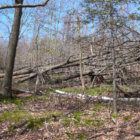News
National Park Service monitors disturbances in Northwest Michigan, UP
|
By NATASHA BLAKELY
Capital News Service
LANSING — For the first time, the National Park Service is collecting data to monitor and find patterns in fires, trees blown down by wind and other events that affect national park landscapes, including Sleeping Bear Dunes National Lakeshore, Isle Royale National Park and Pictured Rocks National Lakeshore. “There’s a general thought that these parks are the last vestiges of natural area, and the areas around the parks are affected by humans, but a lot of times it isn’t quantified,” said Al Kirschbaum, a remote sensing specialist with the Park Service and the project’s lead researcher. “There’s not a lot of numbers associated with it, so that’s where our work came into play: to see if we can quantify disturbances.”
Eric Pfaff, an expert interpreter consulted for the project, said: “People, they like national parks. They enjoy the experience of going to them, so how they’re impacted by various things is important. … There’s been more stress on the parks from the number of visitors.
